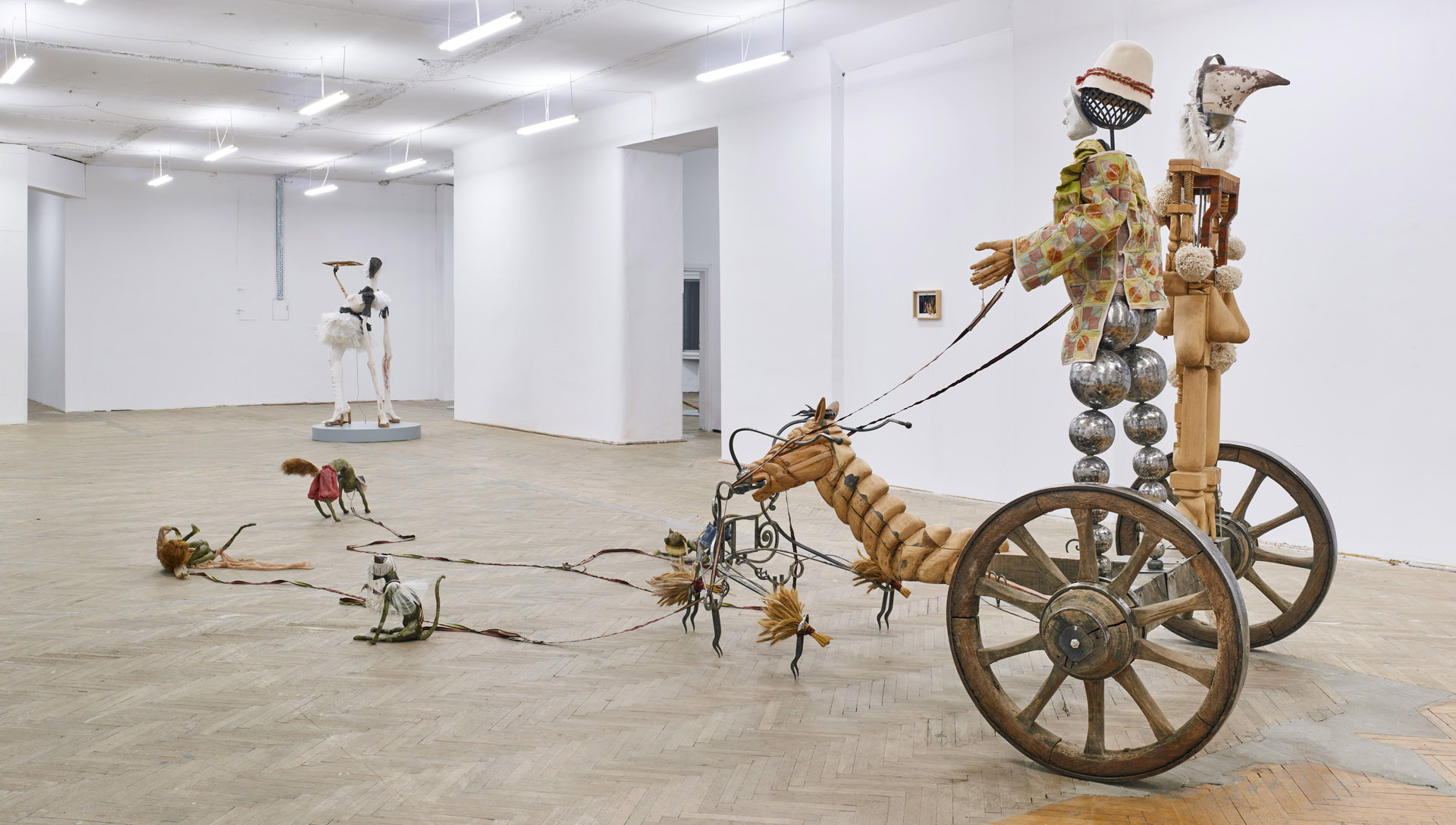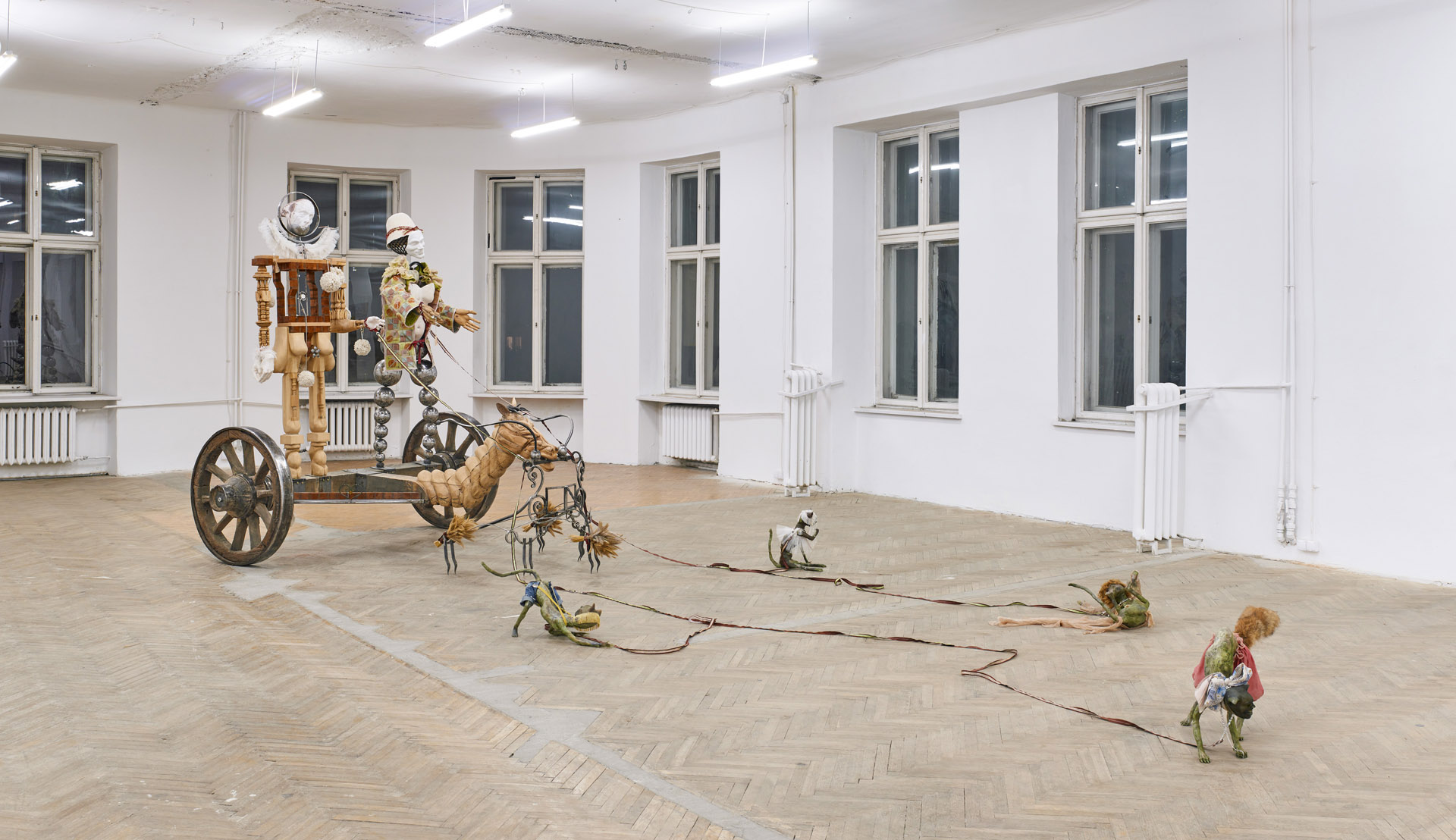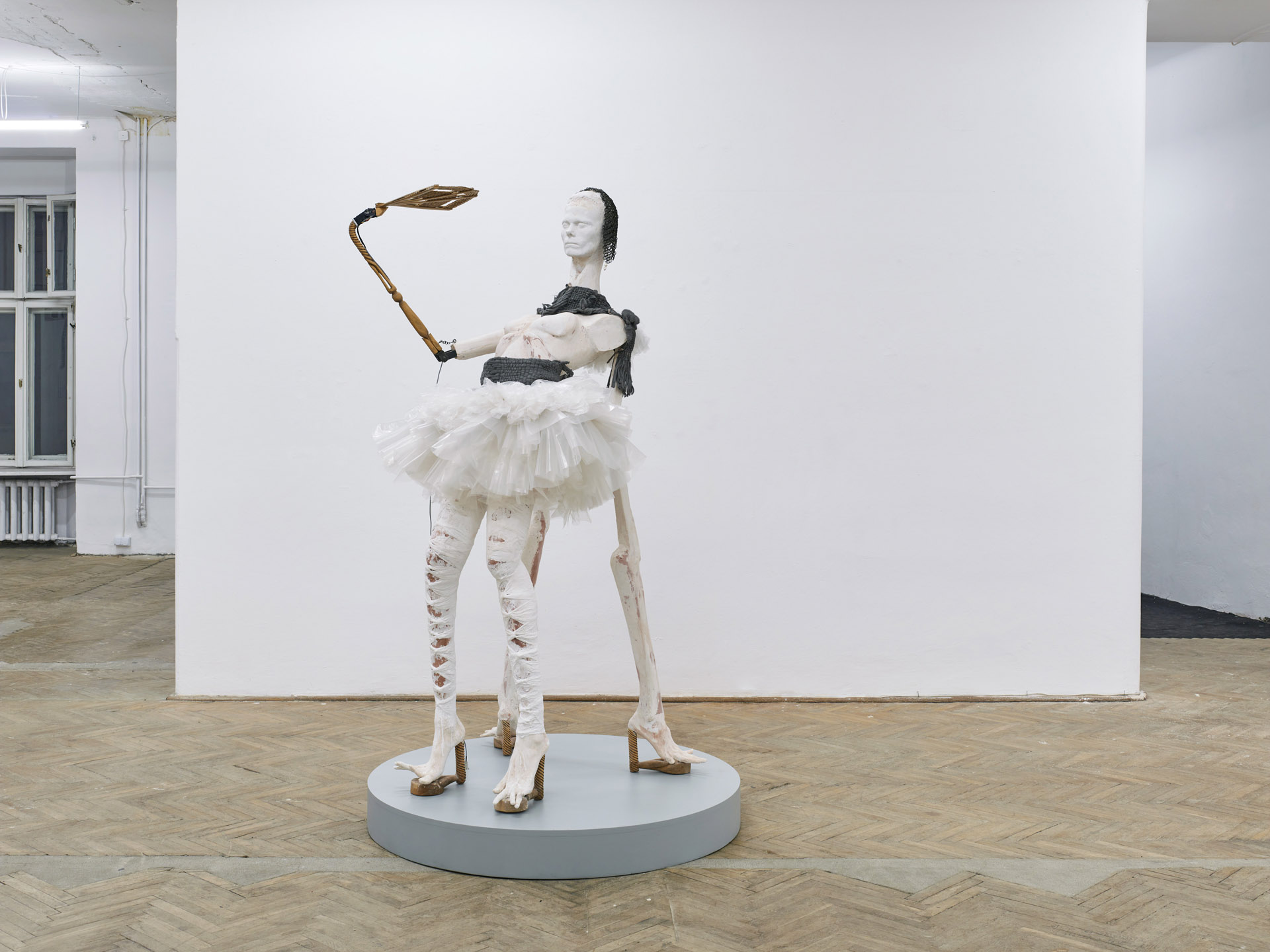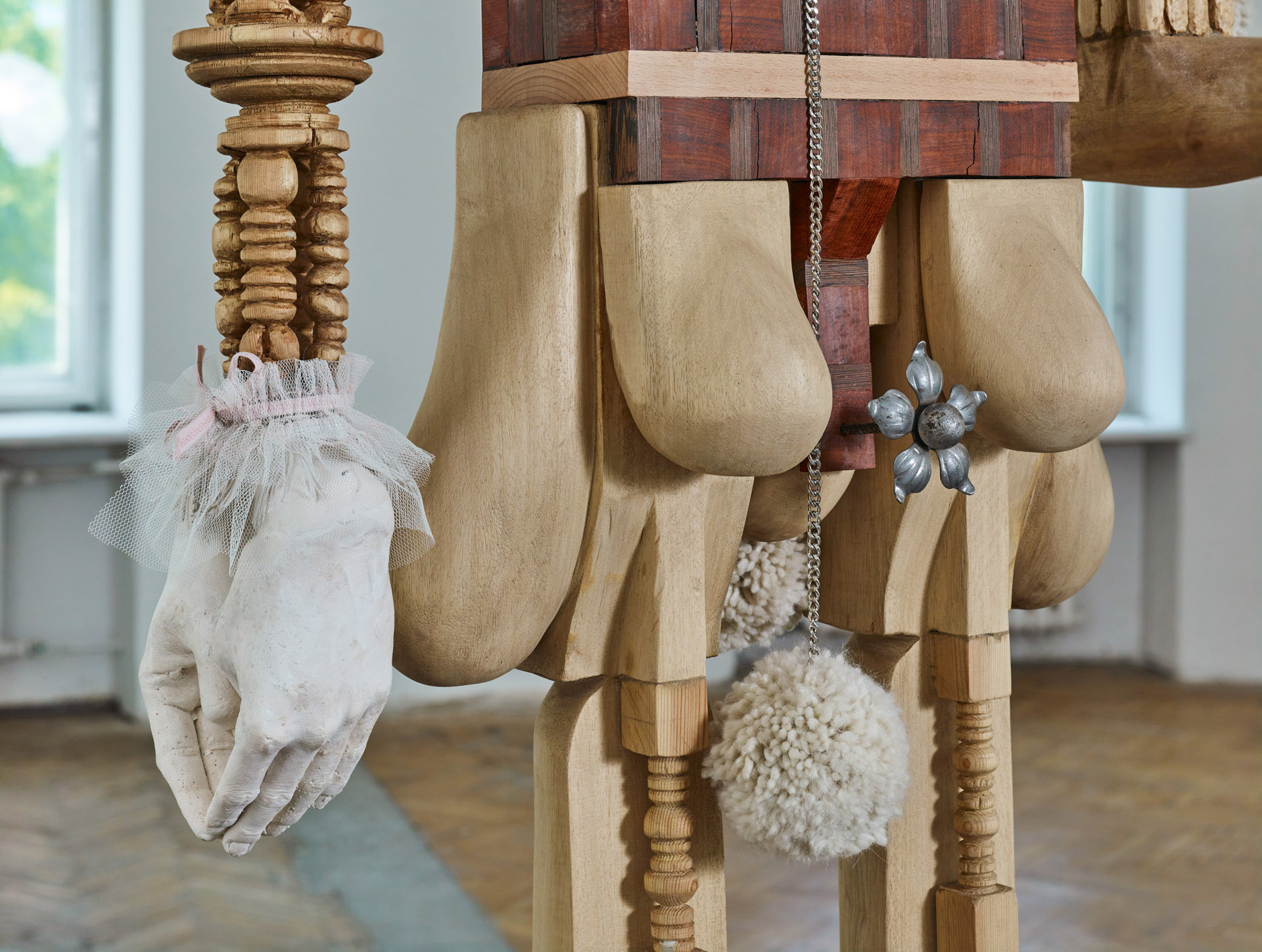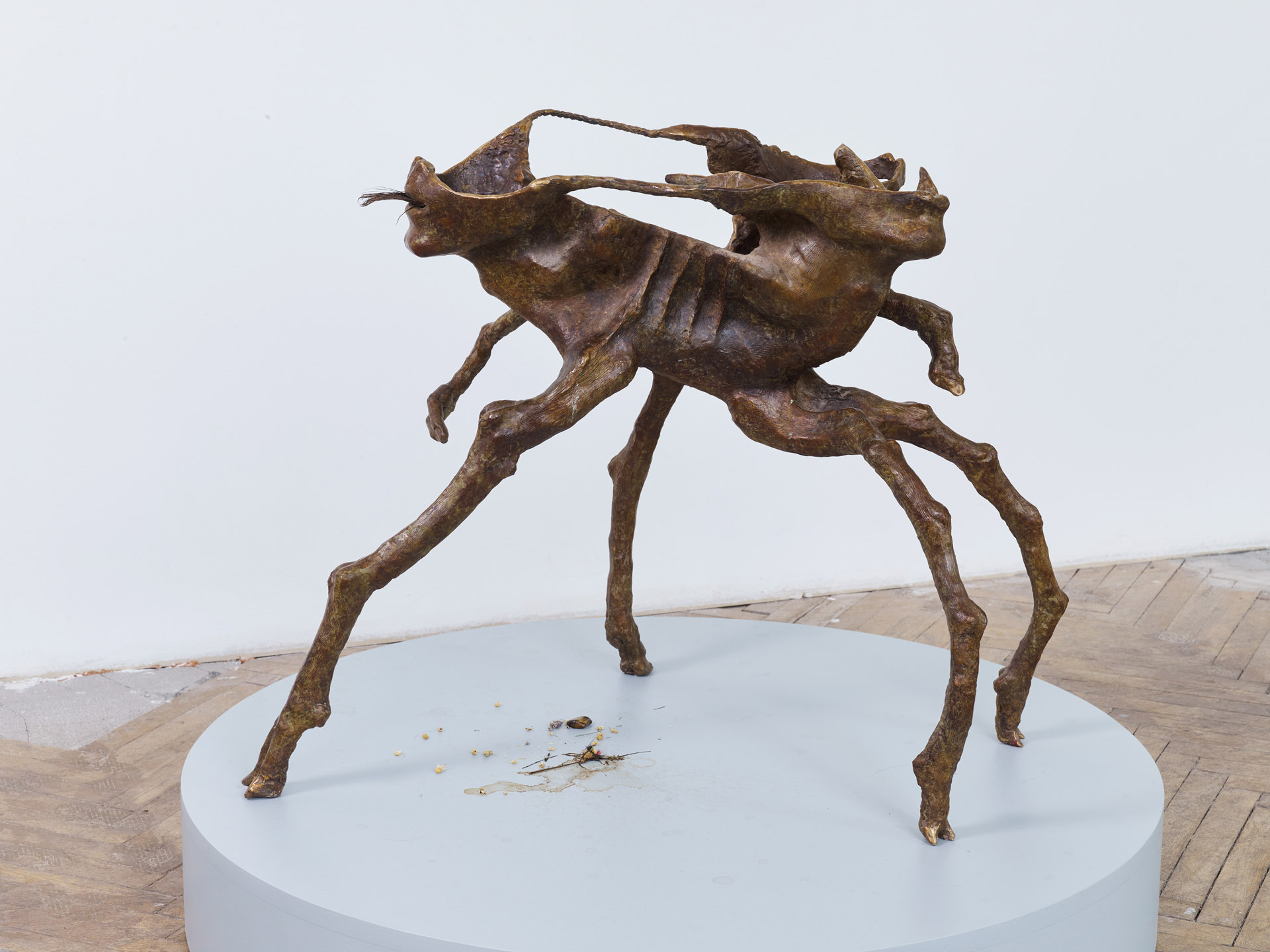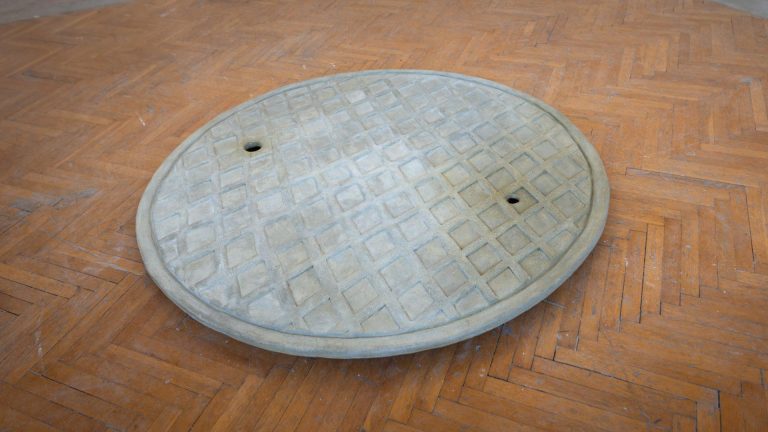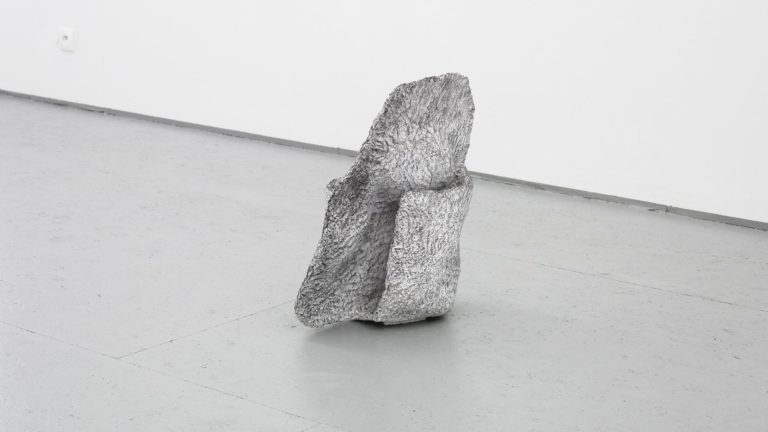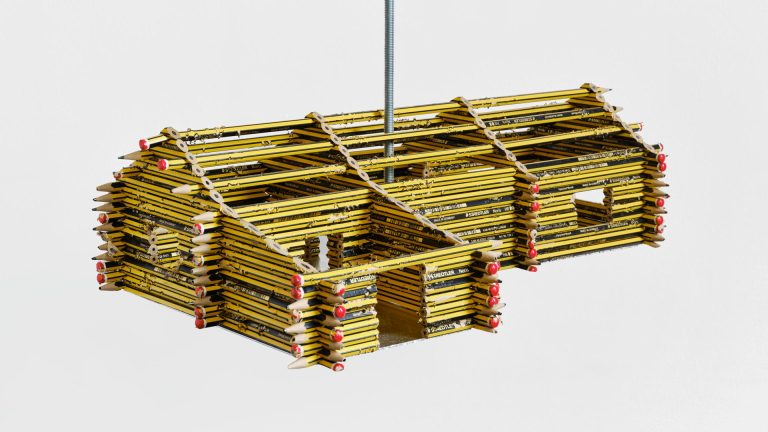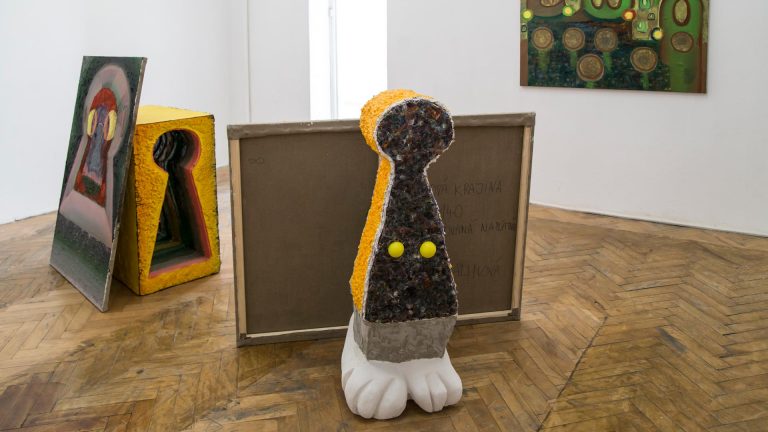Artist: Nils Alix-Tabeling
Exhibition title: Together at Last! … Pierrot & Harlequin, in a rural fantasy
Venue: Piktogram, Warsaw, Poland
Date: July 3 – September 12, 2021
Photography: Błażej Pindor / all images copyright and courtesy of the artist and Piktogram, Warsaw
We are thrilled to announce the opening of the first solo show by Nils Alix-Tabeling in Poland. The exhibition takes its title from the new work “Together at Last! … Pierrot & Harlequin, in a rural fantasy.” It was produced for and with the support of LISTE Art Fair Basel 2020. Due to the pandemic and in discussion with the artist, we have decided to first show the work in Piktogram, in order to put it in relation to other recent sculptural works by Nils Alix-Tabeling.
“Together at Last! … Pierrot & Harlequin, in a rural fantasy” is a sculptural group constituted of a chariot/ plow driven by Harlequin and Pierrot, and pulled by a herd of humanoid cats. The sculpture references neoclassical bronze sculptures of horse-drawn chariots that typically adorn important buildings across Europe, suggesting power and the expansion of empire. Here the artist, using a camp aesthetic language, seeks to talk instead about an alternative history of homosexuality and paganism.
The chariot is driven by two figures, Pierrot and Harlequin, portrayed as a mythical gay couple involved in a transhistorical relationship through popular culture.The chariot includes a forged iron plow, evoking the folk history of rural gayness in commedia dell’arte, and in direct opposition with recent political support by some right wing members of the Polish government in declaring the countryside as LGBT free zones. The use of a plow refers also to the constant struggle by queer communities to reassert their right to existence, to re-plow the same furrow, where it is only through the accumulated labour of numerous queer figures, often made invisible by normative history, that gay people are sometimes able to visibly and peacefully exist. The use of wheat in the sculpture as well as the history of its two drivers insist on the international nature of homosexuality, seeded in all landscapes and indifferent to binaries like western and eastern, urban or rural.
In the Marseille Tarot the chariot represents the 7th Arcana, symbolising movement and success, as well as the strength found through inner drive. In his interpretation Nils would like to present a more critical approach to success. This specific chariot celebrates interpersonal relationships and love instead of state control and conquest. The cats that drive the chariot are all involved in their own matters, some of them libidinal. In contrast to the traditional horses they appear to be unwilling subjects for a nationalistic agenda, thus symbolising the political potential of queerness, as disobedient bodies in an heteronormative and patriarchal machinery.
Also on display are the works: “Corps Humain à la Botte” and “Corps Humain à l’Éventail”, freely inspired by the famous monument by Vera Moukhina (Worker and Kolkhoz Woman, 1937) representing a worker holding a hammer, and a farmer holding a sickle, symbolising the nobility and power of the working class. But here these utilitarian items are replaced by a profusion of symbols associated with frivolity, perversion and pleasure (the fan, the leather boot, the rose, the tutu). The materials are inexpensive and associated with labour: iron wool to clean wooden floor, plastic sheets for painters, butcher gloves made of steel, and tin for roofing: here they are rendered camp and couture through craftsmanship and care. The movement of the fan is nonchalant, the second sculpture offers a rose with many limp hands, a direct reference to visual archetypes of queerness. The leisure and pleasure being performed has a decadent excessive quality, themes and traits usually connected to the aristocracy and the leisure classes, but here these sculptures depict a working class downing tools and reclaiming their own bodies and their own pleasure.
We are also happy to announce Nils Alix-Tabeling’s solo presentation at LISTE Art Fair in Basel. The project has been awarded by the Friends of LISTE as one of the most exceptionally engaging stand concept. Additionally his work “Corps Humain à l’Éventail” has been selected for Sculpture Piazza as part of LISTE Art Fair Basel. Save the date: 20 – 26 September, 2021
Nils Alix Tabeling – b. 1991 in Paris, lives and works Montargis. Master Degree at the Royal College of Art, London, GB




